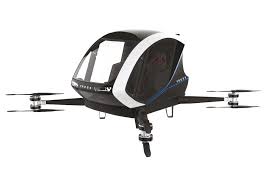Drones: Revolutionising Industries and Daily Life

Introduction
Drones, also known as unmanned aerial vehicles (UAVs), have rapidly emerged as integral tools in various sectors, revolutionising the way we approach tasks ranging from surveillance to delivery. As technology advancements continue to shape our world, the significance of drones becomes increasingly evident, influencing both commercial industries and personal use.
Current Applications of Drones
In 2023, the applications of drones have expanded significantly. In agriculture, farmers are adopting drone technology to monitor crop health, optimise pesticide usage, and manage resources efficiently. A recent survey by the Agricultural Drone Association highlighted that 70% of farmers utilising drones reported improved crop yield and reduced costs. Meanwhile, in the realm of logistics, companies like Amazon and UPS are exploring drone delivery systems, aiming to enhance delivery speed and customer satisfaction. The deployment of drones in urban settings is rapidly increasing, with pilot programs across cities around the globe testing their viability for package delivery.
Moreover, drones are invaluable in emergency response situations. Recent disaster relief efforts, such as the floods in Eastern Australia, saw drones being deployed to assess damage and aid rescue operations, showcasing their critical role in enhancing public safety.
Regulatory Developments
As the popularity of drones escalates, so too does the need for regulation. The UK Civil Aviation Authority (CAA) has established new rules regarding drone operations to ensure safety and privacy standards are adhered to. Stricter registration processes for commercial drone operators and maintaining a safe distance from populated areas are among the regulations being enforced. The integration of drones into UK airspace is a priority, with a focus on creating ‘drone highways’ to streamline their operations.
Future Trends and Innovations
The future of drone technology appears promising, with ongoing innovations expected to drive further growth. Advancements in AI and machine learning are poised to enhance drones’ capabilities in data analysis and autonomous flight. According to a report by Drone Industry Insights, the global drone market is projected to reach £42 billion by 2025, driven by continued adoption across various sectors.
Conclusion
In summary, the rise of drones is reshaping industries and daily life, providing solutions that are more efficient and cost-effective. With the combined efforts of technologists, regulators, and industry leaders, the integration of drones into society is set to increase, paving the way for innovations that will redefine possibilities. As this technology evolves, it remains crucial for stakeholders to work together to harness its potential while addressing safety and privacy concerns, ensuring that drones enrich our lives rather than complicate them.








